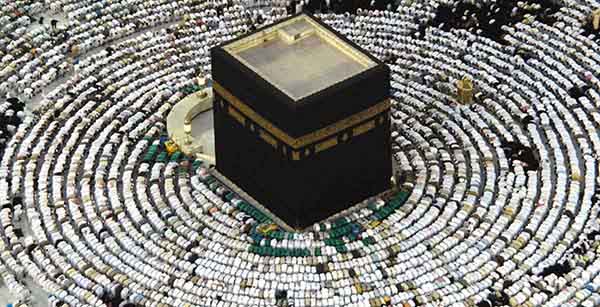Religious interpretation is one of the controversial discourses in modern age among the religious intellectuals. Since traditional understanding of religion is unable to resolve the highly sophisticated issues of contemporary society, an “update theology” and neo-interpretation are the crying needs of our age. However, the traditional frames of mind on one hand and secular approaches to religion on the other hand, have led to sensitive issues.
Seemingly, the muftis and mullahs’ approaches towards religion, which are based on merely cryptic and sacred sources, is too conservative and traditional to unravel the philosophical, political and economic issues of today’s world. However, the secularists strive felicitously to interpret religion in a way to satiate the thirst of younger generation and to meet the needs of modern life.
Unlike Catholic religion, the natural structure of Islam is open. Mohammad Mojtahed Shabestri, an Iranian Islamic intellectual, believes that in the open structure of Islam, religious message directly addresses the men without appointing any official representatives for explaining and interpreting the divine message. To put further light on this topic, he makes a comparison between Catholic Christianity and Islam. He states that in the structure of Catholic religion, there are three angles namely divine message, mankind and church. Hence, it makes a closed triangle. In this close system; church is introduced in the nature of Christianity as official interpreter of divine message which obligates the admirers to follow. He argues that, based on Christian beliefs, when God incarnated in history and carried a message, this message bears an official protector that is church to keep the message safe. Mr. Shabestari stresses that the natural structure of Christianity necessitates that there is always a number of specific people in church to interpret the real essence of Christianity officially and their interpretations eventuate to the existence of dogmas which preclude the followers from disobedience. Therefore, the men being addressed by the divine message in Catholic are not qualified for interpreting the message. So, the natural structure of Christianity is a close system.
However, a third angle is not predicated in Islam and people are addressed directly being allowed to interpret the message. The communication between God and mankind and understanding the divine message by mankind is an open system. Islam, as it permeated the history, according to Mr. Shabestari, is like a globe shining brightly in the frames of theosophy, philosophy, jurisprudence, Holy Qur’an, Hadiths, etc. Thus, all of them are open in emergence and development and muftis are not obliged to think in a certain way or declare a certain fatwa. He, then, explains the difference between Christian dogma and Islamic fatwa:
Dogma includes religious beliefs and Christian’s practical matters; however Islamic fatwa includes only practical issues and religious beliefs are beyond the realm of fatwa or emulation. Fatwa is a deductive view based on a series of human knowledge but dogma is the outcome of the Holy Spirit’s presence in church which is beyond deduction. Fatwa can be numerous and contradicting on a single issue, for instance, ten muftis can declare several fatwa but dogma cannot be different in the same era. Muftis can backtrack on their fatwa, however the Catholic Pope can’t recant his dogma; and, therefore, the Catholic followers construe the historical evolution of dogma as a linguistic change or stating that the church discovers a new truth in every new age which was not stated before.
Hence, the aforementioned differences between dogma and fatwa point out how the rational system in Islam is open and no intrinsically religious element fetters the muftis’ fatwa. Since no official interpreters are defined in the nature of Islam and the people being addressed are also considered interpreters, without any meddlers. Moreover, the content of religious message will never manifest in an authoritative source to fetter the Muslims’ thought rather Muslims are entitled with the rights to understand and embrace the content of religious message. The diverse understandings and interpretations take place among the people and by the people. As it was mentioned earlier, there is the divine message on the one side and the men on the other side – which make an open structure.
Some may argue that religious law will contain a number of certain facts and values regarding social and political issues. This is an incontrovertible fact, however, since no specific source or institution is introduced formally in the nature of Islam, people are entitled to analyze and understand those facts in many ways. They are neither compelled nor stereotyped to understand the fact in one way.
Ill-fatedly, in spite of open structure or open system of thought, Muslims felt obliged, under dictatorial regimes and fundamental frame of minds, to understand a religious message as the regimes explained for them. In another item, the despotic rulers interpreted religious Sharia in their own political interests and declaimed being bestowed divine legitimacy to rule. Moreover, people focused more on their responsibilities rather than their rights. Since they naively believed the rulers as being caliph and cruel kings were considered the wrath of God and kind ones were deemed His mercy, they publically deemed themselves as total slaves in the hand of the kings. Why the cruel rulers should be obeyed?
They believed that whenever the people’s sin increase, God sends them a cruel ruler to retaliate them and they have to be subjugated to them at any case. Hence, such mentalities continued for long and kept them in dark without a sense of protest. In our age, such ideas are obsolete and, with few exceptions, people will know, with a thorough study, the open structure of Islamic law.

